You're using an outdated browser. Please upgrade to a modern browser for the best experience.

Submitted Successfully!
Thank you for your contribution! You can also upload a video entry or images related to this topic.
For video creation, please contact our Academic Video Service.
| Version | Summary | Created by | Modification | Content Size | Created at | Operation |
|---|---|---|---|---|---|---|
| 1 | Zhelin Li | -- | 2951 | 2023-07-18 13:37:42 | | | |
| 2 | Sirius Huang | Meta information modification | 2951 | 2023-07-19 03:00:40 | | |
Video Upload Options
We provide professional Academic Video Service to translate complex research into visually appealing presentations. Would you like to try it?
Cite
If you have any further questions, please contact Encyclopedia Editorial Office.
Schueller, S.K.; Li, Z.; Bliss, Z.; Roake, R.; Weiler, B. Supporting Insect Pollinators in Cities. Encyclopedia. Available online: https://encyclopedia.pub/entry/46923 (accessed on 23 December 2025).
Schueller SK, Li Z, Bliss Z, Roake R, Weiler B. Supporting Insect Pollinators in Cities. Encyclopedia. Available at: https://encyclopedia.pub/entry/46923. Accessed December 23, 2025.
Schueller, Sheila K., Zhelin Li, Zoe Bliss, Rachelle Roake, Beth Weiler. "Supporting Insect Pollinators in Cities" Encyclopedia, https://encyclopedia.pub/entry/46923 (accessed December 23, 2025).
Schueller, S.K., Li, Z., Bliss, Z., Roake, R., & Weiler, B. (2023, July 18). Supporting Insect Pollinators in Cities. In Encyclopedia. https://encyclopedia.pub/entry/46923
Schueller, Sheila K., et al. "Supporting Insect Pollinators in Cities." Encyclopedia. Web. 18 July, 2023.
Copy Citation
Pollinators are responsible for the reproduction of many plant and crop species and provide important diversity for food webs and cultural value. Despite the critical ecosystem services provided by pollinators, rapid pollinator declines are occurring in response to anthropogenic activities that cause the loss of suitable habitat. There is an opportunity for urban green space to support pollination ecosystem services locally and across the landscape.
pollinator
bees
pollination ecosystem services
urban green space
urban design
landscape typology
gardens
plant–pollinator interactions
urban biodiversity
1. Introduction
Pollinators are declining worldwide, and as pollinators are lost, so too are the ecosystem services they provide. Significant pollinator loss is occurring in response to several threats, including pesticides, pathogens, and habitat loss and fragmentation [1][2][3][4]. Loss of pollinator species and networks has been noted at the global scale [1][5], and through direct long-term studies in specific regions [6][7][8][9], which has significant implications for humans and the ecosystems on which they depend. An ecosystem service is a benefit, often economic, that nature provides to humans [10], and the service of animal-assisted reproduction of flowering plants, or pollination, is a recognized critical “regulating” ecosystem service [11]. Many pollinator species increase or ensure the reproduction of plants in both native plant communities and agricultural systems. Almost 90% of all wild flowering plant species depend, at least partially, on animal pollination services for their reproduction [12], and nearly 35% of global food crops rely on pollinators to reproduce [5][13], giving pollinators an estimated food provisioning service value in the USD billions [14]. The impact of pollinator declines is already measurable in agricultural systems [15]. In addition, the ecosystem service of value of pollinators extends beyond their role in food production and the persistence of natural plant communities to include supporting and even cultural ecosystem service value. Insect pollinators, in particular, are at the base of many food webs, providing rich, abundant resources for other species, which in turn support other ecosystem services [5]. The diversity of animals that serve as pollinators—from hummingbirds to metallic green bees—also provide aesthetic and cultural ecosystem service value, especially in cities where species richness enhances the psychological benefits of green space [16].
While urbanization has contributed to pollinator species loss, well-designed urban landscapes provide an opportunity not only to curb the pollination crisis but also to support the beneficial ecosystem services of pollinators, both within the city and beyond. Many of the drivers of pollinator loss are associated with urbanization, including the loss and fragmentation of pollinator habitat through increased land use intensity and impervious surfaces and threats such as non-native species, environmental contaminants, and urban warming [17][18][19]. While some studies have found pollinator declines along increasing urbanization gradients [20][21], the effect of urbanization on insects generally can vary greatly from negative to no impact to even positive effects [22]. In fact, cities can contain surprisingly abundant pollinators compared to rural or agricultural landscapes [19][23][24][25]. Hall et al. [24] suggest that cities with a variety of forage and nesting sites can serve as important refugia for pollinators compared to increasingly less hospitable rural and suburban landscapes that surround urban areas. The relatively small spatial and temporal scales of insect pollinators in terms of functional ecology (for example, habitat range, life cycle, and nesting behavior compared with larger mammals) offer opportunities for small actions to yield large benefits for pollinators [24]. This can support the ecosystem services of pollinators within the city itself, including the productivity of urban food gardens [26], and support the spillover of pollination ecosystem service benefits to agricultural and natural areas outside of the city [27][28].
Interest in urbanization as both a potential threat and opportunity for pollinators has accelerated research in pollinator urban ecology, but the actual practice of supporting pollinator ecosystem services in cities has not been fully realized. Our ability to inform urban design has been improved by systematic reviews of urban pollinators and pollination ecology [18][19][25][29], and general recommendations on ways to support pollinators in urban settings [19][30][31][32] and even assessments of pollinator ecosystem service value of green space in specific cities (from Grenada, Spain to Chicago, USA; [33][34]). However, there is inadequate specific and practical planning and management guidance directly linked to the research that supports it [19]. Gaps between research and practice are a common problem in conservation [35][36], highlighting the need for approaches that stimulate the connection between research and feasible implementation [37].
2. Pollinators: Which Pollinators Can Be the Focus of Efforts to Increase Pollinator Ecosystem Services in Cities?
“Pollinator” is a large category of organisms defined by their function. Although bees and butterflies may be the most well known, pollinators span a range of taxonomic categories including not only wasps and other members of the Apoidea superfamily but also moths, which make up nearly 90% of species in the Lepidoptera order, as well as “hoverflies” in the Syrphidae family of the Diptera order (true flies). Even the term “bee” is a common name that can apply to a diversity of species within the Anthophila clade and includes not only honeybees and native (to North America) bumblebees but also mason, carpenter, and sweat bees. Birds and bats are also critical pollinators in many areas of the world, though insects remain the most frequently recorded pollinators in urban areas worldwide [29]. Specifically, across studies of urban areas globally, Hymenoptera, especially honeybees and bumblebees, were by far the most frequently recorded insects, followed by Lepidoptera and Diptera [29].
Public perceptions of pollinators or of “Save the Bees” campaigns often focus on the European honeybee (Apis mellifera), known for their honey production and pollination of certain crops [38]. In fact, wild bees are equally if not more critical for staple crop pollination (e.g., apples and blueberries [39]), and A. mellifera is non-native in most areas of the world and known to compete with native bees for limited floral resources [40]. While A. mellifera are the most frequently recorded and often the most abundant species in urban areas worldwide [29], an increase in urban beekeeping (hives specifically for A. mellifera) can negatively impact more diverse native bee assemblages in cities [41]. Thus, urban efforts to increase ecosystem services of pollination need to recognize the value of pollinator diversity to maintain services, as well as to consider the critical difference between managing habitat for pollinator services and preserving overall pollinator biodiversity [42]. Intense focus on honeybees spreads misinformation regarding pollinator biodiversity and its value, so it should be established that the term “pollinator” encompasses many species with different needs.
While pollinator responses to urbanization are quite varied and are trait- and scale-dependent, urbanization tends to lead to an increase in the abundance and dominance of generalist and social species and a higher rarity of specialist species [18][25][29]. For example, urban areas tend to support generalist, short-tongued bee species and not specialist bee species [43]. It may be possible to attract more specialist species with different plant selections (see below), but even if only generalist pollinator taxa are common in cities, these still span a diverse assemblage (Table 1) and so can support ecosystem services.
Table 1. A list of generalist insect pollinator families and genera (italicized) based on ref. [44].
| Category | Species |
|---|---|
| Bees | Many (but not all): bumblebees (Bombus spp.), sweat bees (Halictus sp. and Lasioglossum sp.), leaf-cutter bees (Megachile sp.), carpenter bees (Xylocopa sp.) |
| Wasps | Paper wasps (Polistes sp.), yellowjacket (Vespula), bald-faced hornet (Dolichovespula) |
| Butterflies and moths | Hummingbird moths (Hemaris sp.), sulphurs (Colias sp.), swallowtails (Papilio sp.), fritillaries (Speyeria sp.) |
| Flies | Families: bee flies (Bombyliidae), Syrphid (hover) flies (Syrphidae), Tachinid flies (Tachinidae), thick-headed flies (Conopidae) |
| Beetles | Families: soldier beetles (Cantharidae), long-horned beetles (Cerambycidae), leaf beetles (Chrysomelidae), snout beetles (Curculionidae) |
Understanding the finer-scale differential effects of urbanization on pollinators can allow urban designers to focus on providing habitat to the pollinator species most likely to be present or to take informed approaches to improve habitat suitability for missing taxa. For example, ground-nesting bee species richness decreases with an increase in the impervious surface of an area [45] as ground-nesting species require patches of bare dirt in which to nest. Conversely, cavity-nesting and aboveground-nesting bee species are more abundant in more densely built urban areas, given that they are able to build their nests in pre-existing cavities of urban structures [18][45]. Research also shows that even just the presence of permanent grassland can increase the number of rare bee species supported [45]. Thus, design efforts that increase bare soil and permanent grassland habitat in areas of highly impervious surfaces can diversify the pollinator assemblage. Habitat patch size can also affect pollinator composition. Suburban and urban sites containing smaller habitat patches show an increases in small bee, social bee, and solitary cavity-nesting bee species [46]. These urban habitat patches also favor species in the family Halictidae (sweat bees) over Apidae (honey, bumble, carpenter, and cuckoo bees). Study results such as these can better direct plant selection and habitat construction in urban areas based on the floral preferences of the more favored species; for example, sweat bees prefer flowers from the plant families Asteraceae (asters and daisies) and Lamiaceae (mints) [44].
Managing habitats for diverse pollinator assemblages in cities is feasible, because although they may have different habitat and floral resource needs, there are many overlaps in needs within temperate insect pollinator communities. This overlap provides opportunities to create beneficial habitat for many pollinator groups at once [44]. For example, 30% of the 4000 bees native to the United States are cavity-nesting species, using dead wood and plant stems as shelter for developing larvae [47]. These cavity-nesting bees include mason, leafcutter, and carpenter bees, which all belong to different genera. Similarly, well-chosen plants can attract pollinators from completely different insect orders, e.g., butterflies and moths (Lepidoptera), bees (Hymenoptera), beetles (Coleoptera), and flies (Diptera).
3. Summary of Planting Recommendations at the Local Scale
Urbanized areas, especially less densely built areas more characteristic of “suburban” or “urban sprawl” that still have a high proportion of vegetated areas, represent a matrix for some bee species, especially large-bodied, generalist, and cavity-nesting species, while many specialist species may have habitat requirements that are incompatible with most levels of urbanization. Urban environments may be able to support a diverse assemblage of bee communities by improving habitat quality at a relatively small scale. Actions to diversify urban bee community assemblages and improve the genetic diversity of existing populations should emphasize provisioning habitat and resource requirements for smaller-bodied and ground-nesting species, which make up 75% of bee species [25].
For urban habitats, it is not necessarily the degree of “urban-ness” but instead the specific characteristics of each urban green space that ultimately influence pollinator abundance and diversity. Urban areas with a higher floral diversity and floral abundance tend to have a higher pollinator abundance and/or diversity. Native gardens typically feature greater floral abundance, taller vegetation, more cover, and more potential nesting sites that likely attract pollinators. Incorporating native plants into the urban landscape is critically important for supporting abundant, diverse pollinator populations. However, even though plant nativity has been found to positively affect bee abundance and richness, it need not be the only consideration in floral resource management. Many non-native, ornamental plants serve the dual purpose of providing pollinator resources (e.g., nectar, pollen, structure) and signaling important social cues, including legibility and familiarity, that influence the acceptance, care, and longevity of gardens. Public park managers, landscapers, and even homeowners should prioritize native flowering species, but they should not be afraid to fill in gaps in flowering periods with non-native species when needed [48], if the risks discussed above are considered.
Floral morphology is another important factor to consider while improving the quality of pollinator habitat. A garden with diverse flower shapes, colors, and other features will attract a more diverse assemblage of pollinators. Moreover, providing a diversity of flowers across the entire growing season will support a greater diversity of pollinators throughout their life cycles. The seasonality of flowering times and food availability throughout the growing season is essential to ensure that a diverse community of bees can persist even within a relatively small area [49]. An array of plant species that allow for consistent flowering, from spring ephemerals to late-season bloomers, has been shown to be of greater significance to bee populations than high plant nativity. Though plant selection is often focused on herbaceous species, trees represent significant sources of floral resources when in bloom due to the size and abundance of inflorescences. Including native flowering tree species into the landscape can provide a substantial pollinator resource within a very small footprint [50] as well as woody vegetation for cavity-nesters [51]. Leaf litter, plant stems, dead and decaying plant debris, bare soil, as well as other habitats that are beyond floral resources, provide valuable nesting and overwintering spots for pollinators.
Given the research findings reviewed, to support pollinators in urban green spaces through planting design, in summary, researchers recommend the following:
-
Incorporate high densities of flowering plants, including flowering trees.
-
Incorporate a high diversity of flowering species by varying the species and floral features in each bed across the landscape.
-
Utilize species with flowering times that span the entire growing season, including beneficial spring bulbs and late-blooming fall flowers.
-
In areas with high aesthetic and maintenance requirements, utilize non-native, ornamental, or “nativar” plants that provide pollinator resources but do not pose a risk of invasive spread.
-
In areas with lower aesthetic and maintenance requirements, utilize as many native plants as possible.
-
Seek out native plants that are well-adapted to the harsh conditions of urban environments. Some desirable characteristics include salt, heat, and drought tolerance and higher pH tolerance.
-
Avoid the widespread use of wood mulch; instead, create a mix of bare ground and leaf litter cover to support bees with different nesting requirements.
-
Where appropriate, use plants as “living mulch” to maximize plant resources and reduce weeding and watering requirements.
-
Look for opportunities to “improve the matrix” between garden beds. Consider bee-friendly lawns, flowering trees, and functional planters that can provide additional support between garden beds.
Taking these recommendations and the research into consideration, the researchers designed four replicable garden typologies that provide multifunctional benefits to people and pollinators in an urban or suburban setting. A typology describes a design solution for a particular set of conditions. Researchers propose typologies that address four main design goals for urban pollinator gardens: pollinator needs, safety, ease of maintenance, and cultural aesthetics (Figure 1). The four proposed typologies (Figure 2, Figure 3, Figure 4 and Figure 5) represent planting templates for four common urban site conditions with plants specific to the midwestern United States. In terms of pollinator needs, the typologies consider key features such as high floral diversity and abundance, high diversity and density of native plants, sufficient floral resources throughout the growing season, and diverse floral shapes. In terms of safety concerns, it may be an urban requirement that vegetation height be less than 3 feet or canopy height greater than 6 feet to provide clear visibility. The typologies also consider ease of maintenance by using seven species or less planted at a high density that will form a tightly growing mass to shade out weeds. Several cultivated native plants (i.e., “nativars”) are used that were selected for their superior landscape performance characteristics, such as drought tolerance, tidy habit, or more attractive blooms. Finally, the designs feature plants that are visually attractive, including beautiful flowers and foliage, with an emphasis on plants that provide multiple seasons of interest. These ecological and social goals inform the proposed typologies, creating design solutions that provide numerous benefits when implemented in an urban setting (Figure 6).
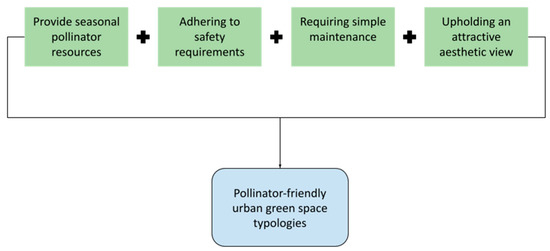
Figure 1. Guiding principles for creating informed pollinator garden typologies in an urbanized setting.
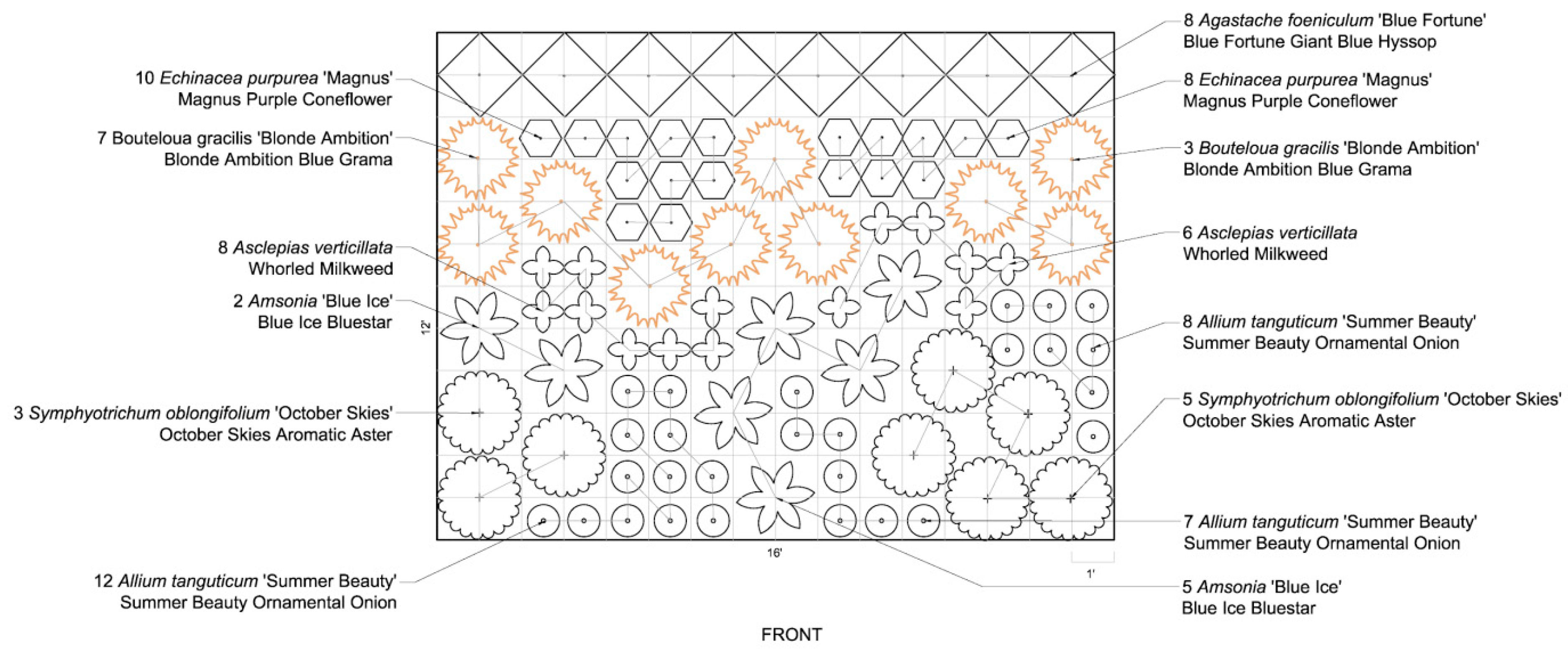
Figure 2. Typology 1: Full sun, medium moisture, high visibility (e.g., showy sidewalk garden).
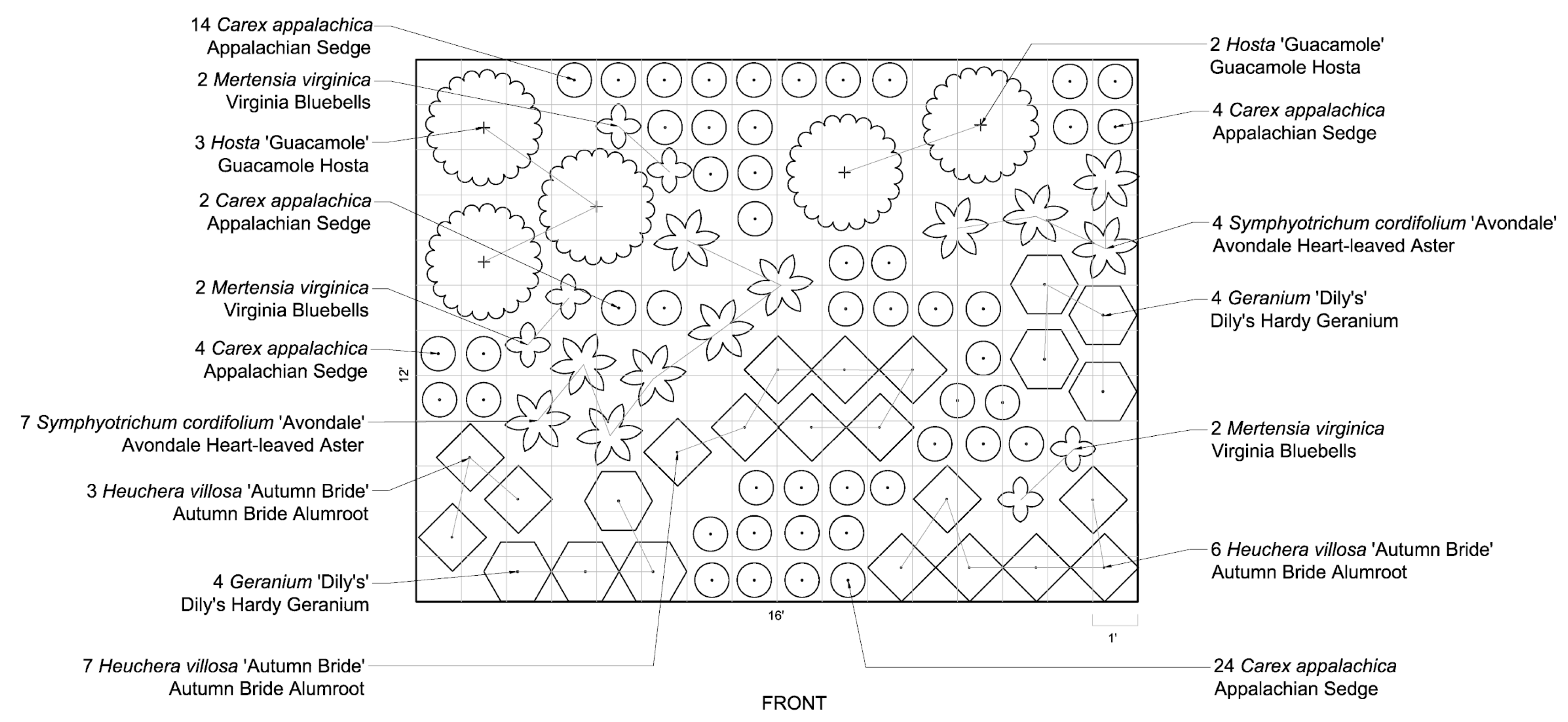
Figure 3. Typology 2: Shade, dry, high visibility (e.g., under tree canopy).
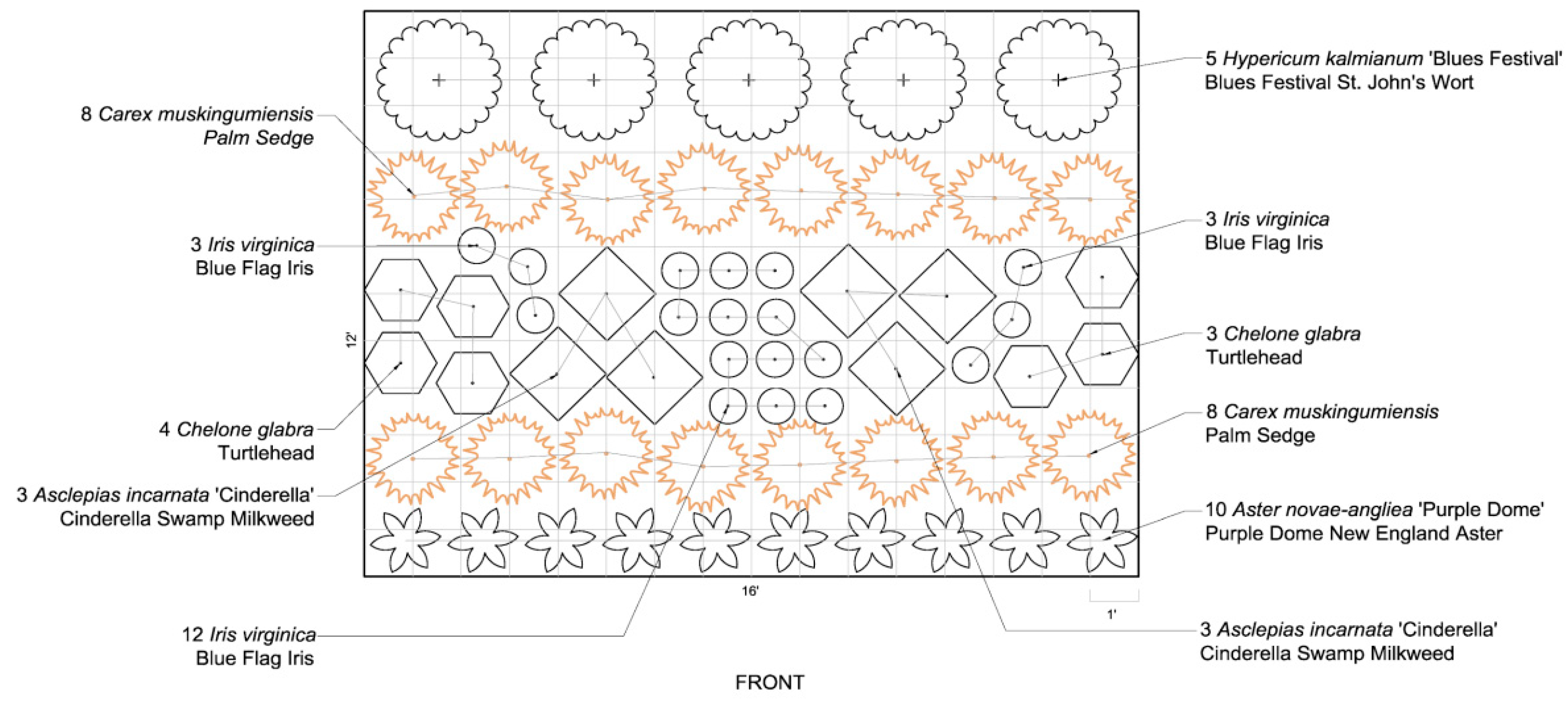
Figure 4. Typology 3: Partial sun, frequently wet (e.g., rain garden).
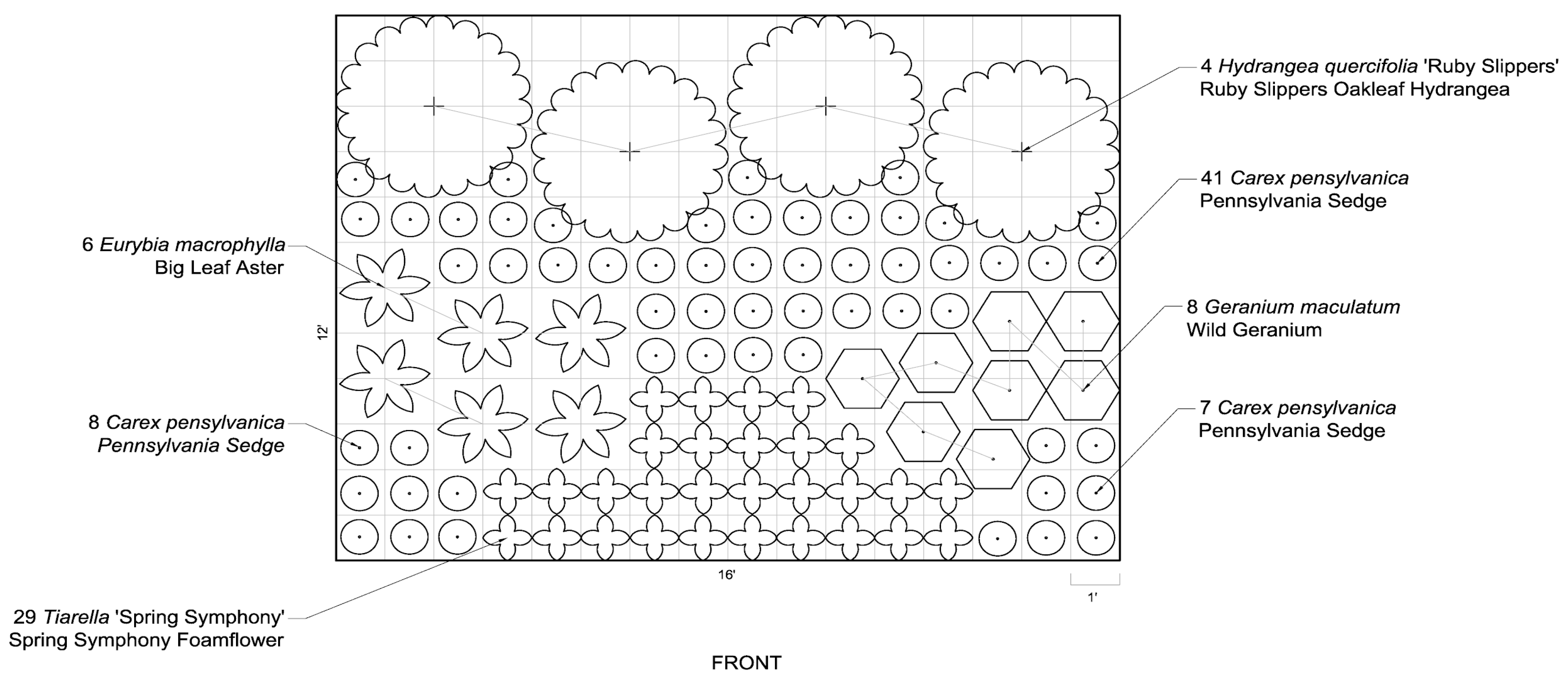
Figure 5. Typology 4: Shade, medium moisture, low visibility (e.g., foundation hedge).
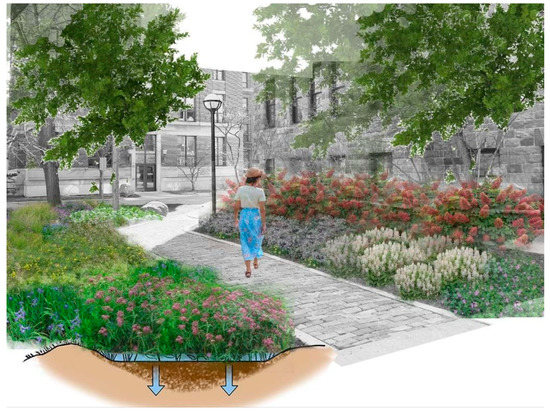
Figure 6. Visual to illustrate application of Typology 3 and Typology 4 in an urban setting, where it provides multifunctional benefits of pollinator habitat, improved water infiltration (shown as arrows), and aesthetic enjoyment.
4. Summary of Landscape-Scale Recommendations for Urban Planning
While local garden-scale characteristics are critical for attracting and supporting pollinators, the consideration of a broader landscape-scale perspective can better inform urban planning to promote the ecosystem service value of pollinators. Pollinator foraging distances and proximity to natural habitats can be helpful factors to prioritize locations for new pollinator habitat and improve matrix quality. Linking quality, source habitats to the surrounding habitat is essential to support metapopulations of diverse bee species. Because the mean range for bee species is much smaller than for other animals, unpaved, unbuilt areas larger than 100 square meters can support abundant floral resources and may even represent viable habitat for small-bodied species [52], and even smaller spaces can be corridors. Small, unpaved surfaces in urban areas, such as along sidewalk edges or in-between buildings, should be planted with flowering herbs and trees to function as stepping-stones between habitat patches within an urban matrix [53]. By prioritizing existing urban green spaces for land-sparing and emphasizing land-sharing across the broader matrix through improvements in habitat quality, communities of more bee species may be able to establish large, connected, and persistent populations in urbanized environments. Beyond gardens designed for aesthetics, vegetable gardens can also provide the floral resources that pollinators require [51]. Property owners, especially those adjacent and near green spaces, should be encouraged to increase the overall structural and vegetative heterogeneity of their yards, but even for the most resistant of individuals, simply minimizing the presence and area of turf can be beneficial [54].
5. Conclusions
The field of urban pollinator landscape ecology is still developing, but there is no question that there is high potential for urban landscapes to support functional pollinator habitat. As the value of urban green spaces is increasingly being recognized, and the researchers have accumulated a body of research on the specific features of effective pollinator habitat at the local and landscape scale, this knowledge can be directly applied to the design of individual gardens and planning across urban landscapes.
References
- Potts, S.G.; Biesmeijer, J.C.; Kremen, C.; Neumann, P.; Schweiger, O.; Kunin, W.E. Global Pollinator Declines: Trends, Impacts and Drivers. Trends Ecol. Evol. 2010, 25, 345–353.
- Pleasants, J.M.; Oberhauser, K.S. Milkweed Loss in Agricultural Fields Because of Herbicide Use: Effect on the Monarch Butterfly Population. Insect Conserv. Divers. 2013, 6, 135–144.
- Goulson, D.; Nicholls, E.; Botías, C.; Rotheray, E.L. Bee Declines Driven by Combined Stress from Parasites, Pesticides, and Lack of Flowers. Science 2015, 347, 1255957.
- Nicolson, S.W.; Wright, G.A. Plant—Pollinator Interactions and Threats to Pollination. Funct. Ecol. 2017, 31, 22–25.
- IPBES. The Assessment Report of the Intergovernmental Science-Policy Platform on Biodiversity and Ecosystem Services on Pollinators, Pollination and Food Production; Potts, S.G., Imperatriz-Fonseca, V.L., Ngo, H.T., Eds.; Secretariat of the Intergovernmental Science-Policy Platform on Biodiversity and Ecosystem Services: Bonn, Germany, 2016; 552p.
- Biesmeijer, J.C.; Roberts, S.P.M.; Reemer, M.; Ohlemüller, R.; Edwards, M.; Peeters, T.; Schaffers, A.P.; Potts, S.G.; Kleukers, R.; Thomas, C.D.; et al. Parallel Declines in Pollinators and Insect-Pollinated Plants in Britain and the Netherlands. Science 2006, 313, 351–354.
- Burkle, L.A.; Marlin, J.C.; Knight, T.M. Plant-Pollinator Interactions over 120 Years: Loss of Species, Co-Occurrence, and Function. Science 2013, 339, 1611–1615.
- Cameron, S.A.; Lozier, J.D.; Strange, J.P.; Koch, J.B.; Cordes, N.; Solter, L.F.; Griswold, T.L. Patterns of Widespread Decline in North American Bumble Bees. Proc. Natl. Acad. Sci. 2011, 108, 662–667.
- Martins, A.C.; Gonçalves, R.B.; Melo, G.A.R. Changes in Wild Bee Fauna of a Grassland in Brazil Reveal Negative Effects Associated with Growing Urbanization during the Last 40 Years. Zoologia (Curitiba) 2013, 30, 157–176.
- Balmford, A.; Bruner, A.; Cooper, P.; Costanza, R.; Farber, S.; Green, R.E.; Jenkins, M.; Jefferiss, P.; Jessamy, V.; Madden, J.; et al. Ecology: Economic Reasons for Conserving Wild Nature. Science 2002, 297, 950–953.
- Leemans, R.; Groot, R.S. de Millennium Ecosystem Assessment: Ecosystems and Human Well-Being: A Framework for Assessment; Island Press: Washington, DC, USA, 2003; ISBN 978-1-55963-402-1.
- Ollerton, J.; Winfree, R.; Tarrant, S. How Many Flowering Plants Are Pollinated by Animals? Oikos 2011, 120, 321–326.
- Klein, A.-M.; Vaissière, B.E.; Cane, J.H.; Steffan-Dewenter, I.; Cunningham, S.A.; Kremen, C.; Tscharntke, T. Importance of Pollinators in Changing Landscapes for World Crops. Proc. R. Soc. B Biol. Sci. 2007, 274, 303–313.
- Gallai, N.; Salles, J.-M.; Settele, J.; Vaissière, B.E. Economic Valuation of the Vulnerability of World Agriculture Confronted with Pollinator Decline. Ecol. Econ. 2009, 68, 810–821.
- Reilly, J.R.; Artz, D.R.; Biddinger, D.; Bobiwash, K.; Boyle, N.K.; Brittain, C.; Brokaw, J.; Campbell, J.W.; Daniels, J.; Elle, E.; et al. Crop Production in the USA Is Frequently Limited by a Lack of Pollinators. Proc. R. Soc. B Biol. Sci. 2020, 287, 20200922.
- Fuller, R.A.; Irvine, K.N.; Devine-Wright, P.; Warren, P.H.; Gaston, K.J. Psychological Benefits of Greenspace Increase with Biodiversity. Biol. Lett. 2007, 3, 390–394.
- Harrison, T.; Winfree, R. Urban Drivers of Plant-Pollinator Interactions. Funct. Ecol. 2015, 29, 879–888.
- Ayers, A.C.; Rehan, S.M. Supporting Bees in Cities: How Bees Are Influenced by Local and Landscape Features. Insects 2021, 12, 128.
- Prendergast, K.S.; Dixon, K.W.; Bateman, P.W. A Global Review of Determinants of Native Bee Assemblages in Urbanised Landscapes. Insect Conserv. Divers. 2022, 15, 385–405.
- Ahrné, K.; Bengtsson, J.; Elmqvist, T. Bumble Bees (Bombus spp.) along a Gradient of Increasing Urbanization. PLoS ONE 2009, 4, e5574.
- Geslin, B.; Gauzens, B.; Thébault, E.; Dajoz, I. Plant Pollinator Networks along a Gradient of Urbanisation. PLoS ONE 2013, 8, e63421.
- Jones, E.L.; Leather, S.R. Invertebrates in Urban Areas: A Review. EJE 2013, 109, 463–478.
- Baldock, K.C.; Goddard, M.A.; Hicks, D.M.; Kunin, W.E.; Mitschunas, N.; Osgathorpe, L.M.; Potts, S.G.; Robertson, K.M.; Scott, A.V.; Stone, G.N. Where Is the UK’s Pollinator Biodiversity? The Importance of Urban Areas for Flower-Visiting Insects. Proc. R. Soc. B Biol. Sci. 2015, 282, 20142849.
- Hall, D.M.; Camilo, G.R.; Tonietto, R.K.; Ollerton, J.; Ahrné, K.; Arduser, M.; Ascher, J.S.; Baldock, K.C.R.; Fowler, R.; Frankie, G.; et al. The city as a refuge for insect pollinators. Conserv. Biol. 2017, 31, 24–29.
- Wenzel, A.; Grass, I.; Belavadi, V.V.; Tscharntke, T. How Urbanization Is Driving Pollinator Diversity and Pollination—A Systematic Review. Biol. Conserv. 2020, 241, 108321.
- Potter, A.; LeBuhn, G. Pollination Service to Urban Agriculture in San Francisco, CA. Urban Ecosyst. 2015, 18, 885–893.
- Goulson, D.; Lepais, O.; O’connor, S.; Osborne, J.L.; Sanderson, R.A.; Cussans, J.; Goffe, L.; Darvill, B. Effects of Land Use at a Landscape Scale on Bumblebee Nest Density and Survival. J. Appl. Ecol. 2010, 47, 1207–1215.
- Langellotto, G.A.; Melathopoulos, A.; Messer, I.; Anderson, A.; McClintock, N.; Costner, L. Garden Pollinators and the Potential for Ecosystem Service Flow to Urban and Peri-Urban Agriculture. Sustainability 2018, 10, 2047.
- Silva, V.H.D.; Gomes, I.N.; Cardoso, J.C.F.; Bosenbecker, C.; Silva, J.L.S.; Cruz-Neto, O.; Oliveira, W.; Stewart, A.B.; Lopes, A.V.; Maruyama, P.K. Diverse Urban Pollinators and Where to Find Them. Biol. Conserv. 2023, 281, 110036.
- Baldock, K.C. Opportunities and Threats for Pollinator Conservation in Global Towns and Cities. Curr. Opin. Insect Sci. 2020, 38, 63–71.
- Xerces.org. Available online: https://xerces.org/publications/guidelines/pollinator-friendly-parks (accessed on 23 May 2023).
- Aronson, M.F.; Lepczyk, C.A.; Evans, K.L.; Goddard, M.A.; Lerman, S.B.; MacIvor, J.S.; Nilon, C.H.; Vargo, T. Biodiversity in the City: Key Challenges for Urban Green Space Management. Front. Ecol. Environ. 2017, 15, 189–196.
- Llodrà-Llabrés, J.; Cariñanos, P. Enhancing Pollination Ecosystem Service in Urban Green Areas: An Opportunity for the Conservation of Pollinators. Urban For. Urban Green. 2022, 74, 127621.
- Davis, A.Y.; Lonsdorf, E.V.; Shierk, C.R.; Matteson, K.C.; Taylor, J.R.; Lovell, S.T.; Minor, E.S. Enhancing Pollination Supply in an Urban Ecosystem through Landscape Modifications. Landsc. Urban Plan. 2017, 162, 157–166.
- Bertuol-Garcia, D.; Morsello, C.; El-Hani, C.N.; Pardini, R. A Conceptual Framework for Understanding the Perspectives on the Causes of the Science–Practice Gap in Ecology and Conservation. Biol. Rev. 2018, 93, 1032–1055.
- Enquist, C.A.; Jackson, S.T.; Garfin, G.M.; Davis, F.W.; Gerber, L.R.; Littell, J.A.; Tank, J.L.; Terando, A.J.; Wall, T.U.; Halpern, B.; et al. Foundations of Translational Ecology. Front. Ecol. Environ. 2017, 15, 541–550.
- Toomey, A.H.; Knight, A.T.; Barlow, J. Navigating the Space between Research and Implementation in Conservation. Conserv. Lett. 2017, 10, 619–625.
- Smith, T.J.; Saunders, M.E. Honey Bees: The Queens of Mass Media, despite Minority Rule among Insect Pollinators. Insect Conserv. Divers. 2016, 9, 384–390.
- Adamson, N.; Roulston, T.; Fell, R.; Mullins, D. From April to August—Wild Bees Pollinating Crops through the Growing Season in Virginia, USA. Environ. Entomol. 2012, 41, 813–821.
- Paini, D.R. Impact of the Introduced Honey Bee (Apis mellifera) (Hymenoptera: Apidae) on Native Bees: A Review. Austral. Ecol. 2004, 29, 399–407.
- MacInnis, G.; Normandin, E.; Ziter, C.D. Decline in Wild Bee Species Richness Associated with Honey Bee (Apis mellifera L.) Abundance in an Urban Ecosystem. PeerJ 2023, 11, e14699.
- Senapathi, D.; Biesmeijer, J.C.; Breeze, T.D.; Kleijn, D.; Potts, S.G.; Carvalheiro, L.G. Pollinator Conservation—The Difference between Managing for Pollination Services and Preserving Pollinator Diversity. Curr. Opin. Insect Sci. 2015, 12, 93–101.
- Senapathi, D.; Goddard, M.A.; Kunin, W.E.; Baldock, K.C.R. Landscape Impacts on Pollinator Communities in Temperate Systems: Evidence and Knowledge Gaps. Funct. Ecol. 2017, 31, 26–37.
- Holm, H. Pollinators of Native Plants; Pollination Press LLC: Minnetonka, MN, USA, 2014; ISBN 97809913563001.
- Geslin, B.; Le Féon, V.; Folschweiller, M.; Flacher, F.; Carmignac, D.; Motard, E.; Perret, S.; Dajoz, I. The Proportion of Impervious Surfaces at the Landscape Scale Structures Wild Bee Assemblages in a Densely Populated Region. Ecol. Evol. 2016, 6, 6599–6615.
- Hinners, S.J.; Kearns, C.A.; Wessman, C.A. Roles of Scale, Matrix, and Native Habitat in Supporting a Diverse Suburban Pollinator Assemblage. Ecol. Appl. 2012, 22, 1923–1935.
- Vaughan, M.; Black, S.H. Enhancing Nest Sites For Native Bee Crop Pollinators. Agroforestry note 34; USDA National Agroforestry Center: Lincoln, NE, USA, 2007.
- Salisbury, A.; Armitage, J.; Bostock, H.; Perry, J.; Tatchell, M.; Thompson, K. Editor’s Choice: Enhancing Gardens as Habitats for Flower-Visiting Aerial Insects (Pollinators): Should We Plant Native or Exotic Species? J. Appl. Ecol. 2015, 52, 1156–1164.
- Wojcik, V.A.; Frankie, G.W.; Thorp, R.W.; Hernandez, J.L. Seasonality in Bees and Their Floral Resource Plants at a Constructed Urban Bee Habitat in Berkeley, California. J. Kans. Entomol. 2008, 81, 15–28.
- Somme, L.; Moquet, L.; Quinet, M.; Vanderplanck, M.; Michez, D.; Lognay, G.; Jacquemart, A.-L. Food in a Row: Urban Trees Offer Valuable Floral Resources to Pollinating Insects. Urban Ecosyst. 2016, 19, 1149–1161.
- Pardee, G.L.; Philpott, S.M. Native Plants Are the Bee’s Knees: Local and Landscape Predictors of Bee Richness and Abundance in Backyard Gardens. Urban Ecosyst. 2014, 17, 641–659.
- Blaauw, B.R.; Isaacs, R. Larger patches of diverse floral resources increase insect pollinator density, diversity, and their pollination of native wildflowers. Basic Appl. Ecol. 2014, 15, 701–711.
- Van Rossum, F.; Triest, L. Stepping-Stone Populations in Linear Landscape Elements Increase Pollen Dispersal between Urban Forest Fragments. Plant Ecol. Evol. 2012, 145, 332–340.
- Turo, K.J.; Gardiner, M.M. Effects of urban greenspace configuration and native vegetation on bee and wasp reproduction. Conserv. Biol. 2021, 35, 1755–1765.
More
Information
Subjects:
Environmental Sciences
Contributors
MDPI registered users' name will be linked to their SciProfiles pages. To register with us, please refer to https://encyclopedia.pub/register
:
View Times:
593
Revisions:
2 times
(View History)
Update Date:
19 Jul 2023
Notice
You are not a member of the advisory board for this topic. If you want to update advisory board member profile, please contact office@encyclopedia.pub.
OK
Confirm
Only members of the Encyclopedia advisory board for this topic are allowed to note entries. Would you like to become an advisory board member of the Encyclopedia?
Yes
No
${ textCharacter }/${ maxCharacter }
Submit
Cancel
Back
Comments
${ item }
|
More
No more~
There is no comment~
${ textCharacter }/${ maxCharacter }
Submit
Cancel
${ selectedItem.replyTextCharacter }/${ selectedItem.replyMaxCharacter }
Submit
Cancel
Confirm
Are you sure to Delete?
Yes
No




